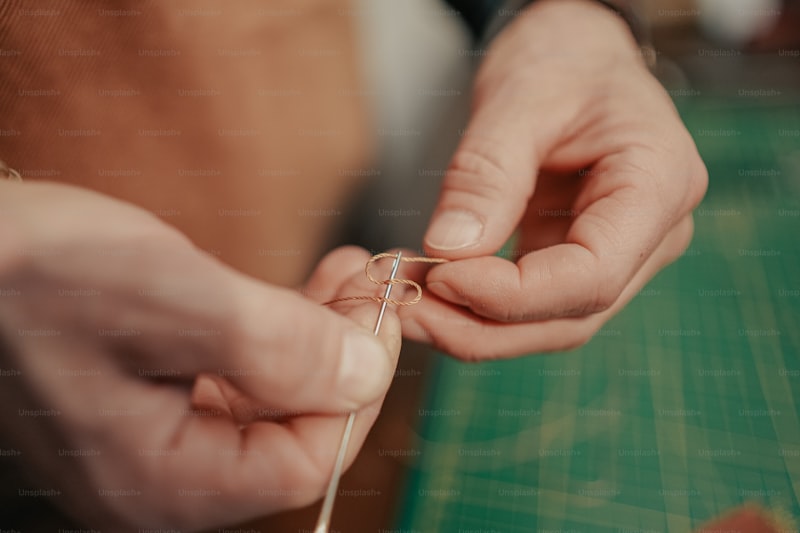Sewing Techniques for Bridal Wear: A Comprehensive Guide for Aspiring Designers
When it comes to creating stunning bridal wear, the right sewing techniques can make all the difference. From delicate lace appliques to structured bodices, mastering these skills can elevate your designs from ordinary to extraordinary. In this article, we will explore essential sewing techniques specifically tailored for bridal wear, ensuring you have the tools and knowledge necessary to craft beautiful wedding gowns.
Understanding the Basics of Bridal Wear
Bridal wear encompasses a variety of garments, including wedding dresses, bridesmaid dresses, and accessories such as veils and sashes. Each piece requires specific sewing techniques to achieve the desired look and fit. Before diving into the advanced techniques, it’s crucial to understand the basics of bridal wear construction.
Fabric Selection for Bridal Wear
The first step in creating exquisite bridal wear is choosing the right fabric. Popular choices include:
| Fabric Type | Characteristics | Best for |
| Lace | Delicate, intricate patterns; can be sheer | Overlay, accents |
| Taffeta | Structured, crisp; adds volume | Bodices, skirts |
| Chiffon | Flowy, lightweight; drapes beautifully | Overlays, flowing skirts |
| Silk | Luxurious, soft; smooth to the touch | Gowns, elegant designs |
By understanding the properties of each fabric, you can choose the right one to enhance your design vision. This knowledge is especially beneficial for creating unique bridal wear that resonates with modern trends.
Essential Sewing Techniques for Bridal Wear
Now, let’s delve deeper into the sewing techniques that are paramount in bridal wear construction. Mastering these techniques will help you create gowns that are not only visually appealing but also structurally sound.
1. Pattern Making and Draping
Pattern making is the foundation of any garment, but bridal wear demands a higher level of precision and creativity. Designing your patterns or draping directly on a dress form allows for unique silhouettes that flatter the wearer’s figure. Consider:
- Using muslin for initial prototypes to test fit and style.
- Incorporating strategic darts and seams to enhance shape.
- Allowing for fitting adjustments through multiple muslin fittings.
2. Hand Sewn Techniques
While machine sewing is essential, certain aspects of bridal wear are best executed by hand. Techniques include:
- Hand-stitched hems: For a delicate finish that avoids bulk.
- Embellishments: Attaching beads, sequins, and lace by hand ensures precision.
- Invisible stitches: Necessary for lining and underlayers.
3. Construction Techniques
Efficient construction is key. Key techniques include:
- Underlining: Use lightweight fabric to provide structure and support.
- Boning: Essential for corsetry and structured bodices.
- Layering: Combine sheer outer fabrics with solid linings for contrast and depth.
4. Finishing Techniques
Finishing techniques are crucial in bridal wear, where every detail matters. Essential methods include:
- Bias binding: Perfect for finishing edges without bulk.
- French seams: Ideal for sheer fabrics, providing a clean finish.
- Interfacing: Used for adding stability to collars, cuffs, and waistbands.
Embellishing Your Bridal Wear
Embellishments can transform a simple gown into a one-of-a-kind masterpiece. Here are popular embellishment techniques:
1. Lace Appliqué
Lace appliqué adds texture and romance to bridal gowns. This technique involves sewing lace motifs onto the gown, enhancing its beauty. To achieve a seamless look:
- Carefully pin the lace in place before sewing.
- Use a fine needle to prevent damage to delicate lace.
- Ensure that the lace is securely attached from all sides.
2. Beading and Sequining
Beading and sequinning can add sparkle and depth. Follow these steps to integrate these embellishments effectively:
- Plan the layout before starting to sew.
- Use the appropriate needle for beading to prevent breakage.
- Secure beads with strong thread to withstand wear.
Caring for Bridal Garments
Once the gown is completed, care must be taken to maintain its pristine condition. Here are some tips for caring for bridal wear:
- Store the gown in a breathable garment bag to prevent yellowing.
- Avoid hanging the gown for extended periods to prevent stretching.
- Consult a professional cleaner experienced in bridal wear for any necessary cleaning.
Conclusion: Mastering the Art of Bridal Wear Sewing Techniques
Bridal wear is an art form that requires a blend of creativity, technical skills, and attention to detail. By mastering essential sewing techniques such as pattern making, embellishing, and caring for fabrics, you’ll be well on your way to creating breathtaking bridal gowns. Remember, each garment tells a story, and as a designer, you have the power to craft unforgettable pieces that will be cherished for a lifetime. Keep these techniques in mind, and don’t hesitate to explore new trends and styles that may inspire your next bridal collection.
Final Notes: As you embark on your journey to create stunning bridal wear, remember that practice and experimentation are key. Keep an open mind, seek inspiration, and always aim for precision. This will set you apart as a designer and help you in your professional growth in the world of fashion.